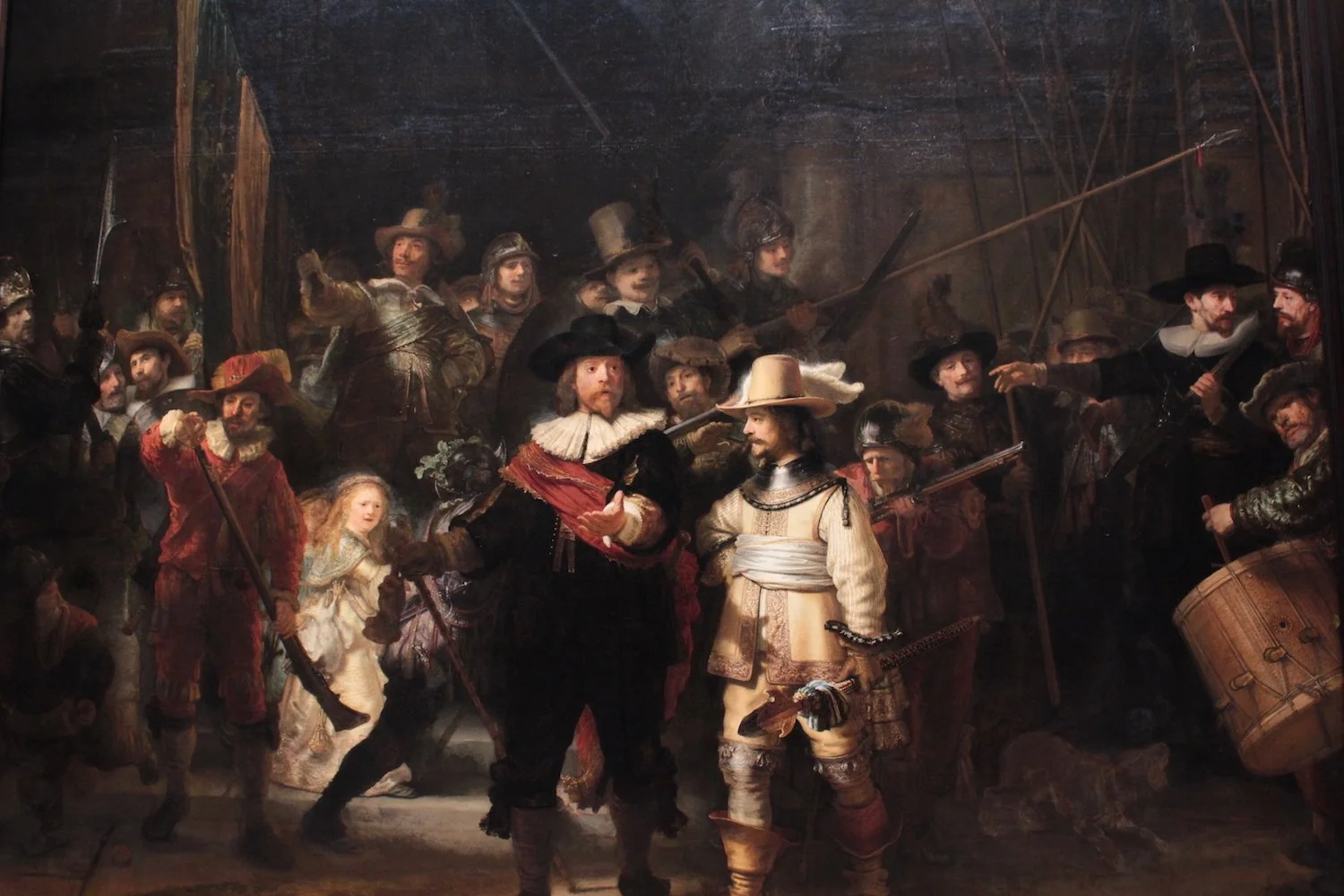Connecting Art to Stories
Rembrandt van Rijn, The Night Watch 1642
Stories have power. They can take you to places. Creating your next artwork is like telling a story. You want your story to grab attention, touch someone deeply, make an impression.
Storytelling is composition, there’s a beginning, middle and end. When you’re writing an artists statement about your artworks, your statement follows the same rules of composition. This is your who, what, how and why.
The first rule in storytelling is to warm up your audience with putting them “in the frame” , to be receptive and listen. That’s where “once upon a time“ comes in. When that phrase is said, it’s a trigger. “Listen, It’s time to pay attention, I have something of interest to share”.
You start by introducing the subject and one or two things about it
Once upon a time there was a thief who was so vain he always put a feather in his hat.
OR During the summer when bushfires raged…
Then there is the qualifier – something about the thief or the bushfires :
He was so clever he could steal from under the nose of a market seller and had never yet been caught.
In the town of Bilpin a local claimed “it’s raining black ash”
Now you have their attention, you are visualising that thief with the feather in his hat stealing something really valuable. You are visualising a bushfire and the sky filled with smoke and ash.
In the third paragraph you introduce the tension. One day – and that’s when everyone is prepared for the real drama to begin.
Now you want to know what the thief is going to do and if he is going to get caught. You want to know how is a landscape of black ash going to be expressed. So you keep listening or reading. This story has your attention.
Making an artwork, writing an artist statement, getting people’s attention for your message starts in the same way.
Here is the concept or the subject or the theme. Next is the qualifier, the something different or interesting about it that qualifies it, makes it different. Then comes the drama, the tension, the thing that grabs you to want to learn more. Finally it is about the resolution, the how you and your art fit into the story.
In a bid to promote the reopening of the Rijksmuseum in Amsterdam after 10 years of renovations, The Dutch bank ING subsidised a recreation of the museum’s’ famous painting , Rembrandt’s The Night Watch.
To a stunned crowd of shoppers in a downtown shopping mall, a group of actors in period costume staged a flash mob performance of Captain Hans Banning Cocq and his troops capturing a runaway thief.
It had all the hallmarks of high drama; a daring chase, policemen on horseback, a regiment of guards marching through the marketplace and Beethoven’s Ode to Joy symphony blaring out through the loudspeakers. Finally the actors stop and are framed as a painting.
Once you think of your art as a story, its easy to write your artist statement around the action or the point of difference, the drama of it. And when someone asks you what your work is about you start from the beginning-
When I was walking in the bush, I noticed some markings in the tree bark, they looked like strange fractal creatures that came alive for me…
What happened next? Connect to the stories in your art and you will never be lost for what to say or how to explain what you do and why you do it.




